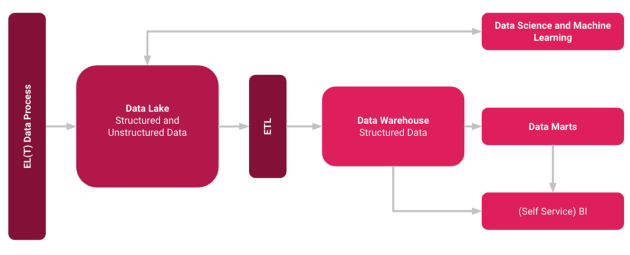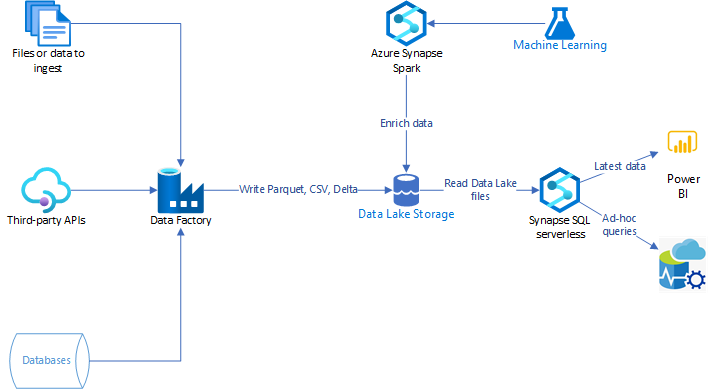Creating an Efficient Data Lakehouse with Azure Synapse Analytics
Written on
Chapter 1: Understanding the Data Lakehouse Concept
A Data Lakehouse represents a contemporary framework that merges the functionalities of both Data Lakes and Data Warehouses. Within the Azure Cloud ecosystem, numerous options exist for developing such a Data Lakehouse, prominently featuring Azure Synapse.
What is Azure Synapse?
Microsoft Azure Synapse Analytics serves as the evolution of Azure SQL Data Warehouse. This innovative service aims to enhance Microsoft's modern Data Warehouse and Big Data strategy, allowing organizations to analyze their data more swiftly and effectively. For those seeking to explore this topic further and understand Azure Synapse's strengths, several resources are available:
- How effective is Microsoft Azure Synapse Analytics?
- Terminology and benefits of Data Warehouse technology.
What is a Data Lakehouse? (Recap)
To clarify for those unfamiliar, a Data Lakehouse is not merely the combination of a Data Lake and a Data Warehouse; it integrates these with purpose-built storage to facilitate unified governance and simplify data movement. In my experience, establishing a Data Lake can often be achieved more rapidly. Once the data is gathered, a Data Warehouse can subsequently be constructed on top of it as a hybrid solution. For more insights, read here.

Chapter 2: Leveraging Azure Synapse for Data Lakehouse Development
The necessary services for constructing a Data Lakehouse are currently available within Azure, and they are well-integrated. Azure Data Factory can be employed to manage data integration from various sources—whether structured, semi-structured, or completely unstructured. While platform-independent tools like Alteryx or Talend are also viable options, utilizing Data Factory may simplify the process for those already within the Azure ecosystem.

Data Lake or Data Lake Storage Gen2 is ideally suited for storage solutions. From this point, Azure Synapse allows for seamless access to data, enabling AdHoc analyses, data marts, or self-service BI through Power BI. With Power BI Data Marts, Microsoft empowers end users with Self-Service BI Marts, offering an alternative solution directly within Azure Synapse.
Microsoft's Commitment to Self-Service BI
How Power BI Data Marts Can Foster a Data-Driven Culture
Furthermore, through Synapse Spark, machine learning can be executed based on existing data. This is advantageous, as it eliminates the need for data duplication, a significant benefit of a modern Data Lakehouse framework.
Don’t Overlook Data Governance!
Beyond technical implementation, the organizational structure is crucial. The question arises: how do I ensure the right data is shared with the right individuals? The answer lies in the concept of Data Mesh. Leveraging services such as Unity Catalog, monitoring, and policy management, Azure simplifies data governance and discovery.
Summary
This overview provided insights into what Azure Synapse is, its advantages, and potential architectural designs. As noted, Azure offers various pathways to establish a Data Lakehouse, with Databricks being another viable option.
Building a Data Lakehouse in Azure with Databricks
How to Establish a Modern Data Platform Using Databricks and Azure Cloud
Explore how to build the Lakehouse architecture with Azure Synapse Analytics in this informative video.
Discover where to start with a modern Data Lakehouse using Azure Synapse in this engaging video.
Sources and Further Readings
[1] AWS, What is a Lake House approach? (2021)
[2] Microsoft, Query a data lake or lakehouse by using Azure Synapse serverless (2022)